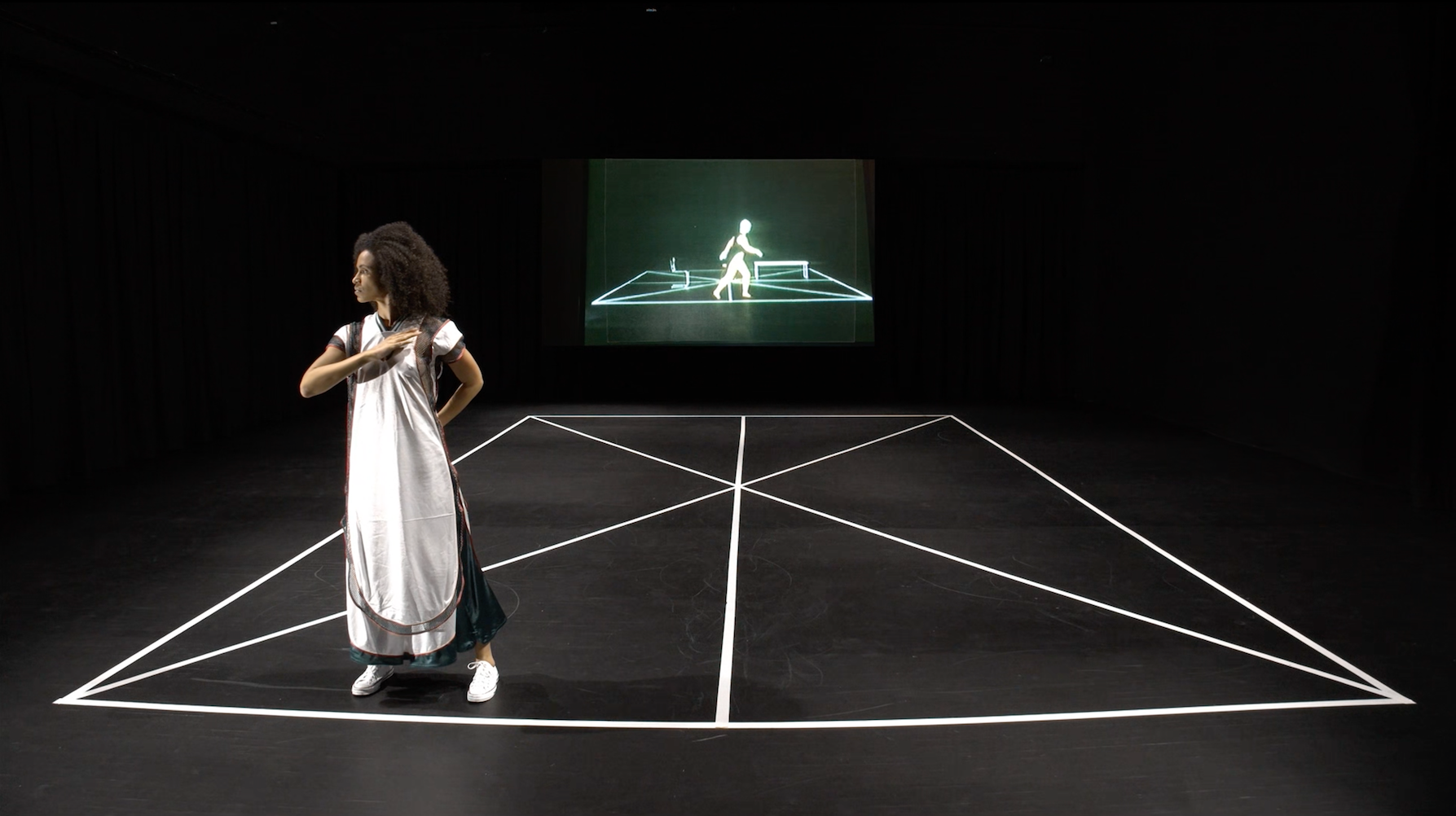ECU Urban Screen | Kandis Williams: Triadic Ballet

Kandis Williams, still from Triadic Ballet, (2021).
The Libby Leshgold Gallery is pleased to announce the launch of a single-channel iteration of Kandis Williams’ video work Triadic Ballet as part of the City of Vancouver’s Public Art Program for Emily Carr University’s Urban Screen.
Location
On Campus
Urban Screen, Wilson Arts Plaza, Emily Carr University of Art + Design
520 E 1st Ave, Vancouver, BC, V5T 0H2 See on Map
Contact
Troy Johnson | libby@ecuad.caThe Libby Leshgold Gallery is pleased to announce the launch of a single-channel iteration of Kandis Williams’ video work Triadic Ballet, as part of the City of Vancouver’s Public Art Program for Emily Carr University’s Urban Screen. The screening will commence on March 1 2022.
The original iteration of this video work was produced while Williams was in residence in New York for her solo presentation, A Line, the inaugural exhibition for 52 Walker, curated by Canadian-born Ebony L. Haynes. Triadic Ballet was formulated as part of a collection of works that move toward a formal dance notation, which has been used in different modes throughout history to capture and inscribe the qualities of movement in two dimensions.
In her research and realization of this project, Williams lays out a multi-pronged matrix introducing four “forks” that she has charted in her history of dance to unspool its white supremacist underpinnings. The first is the anthropological and social understanding of dance as a part of healing, ritual, and entertainment. The second is the “dance of death”: how martial forms emerged as a response to how societies have been organized. The third is an appraisal of courtly dance which has heavily shaped ballet and modern dance as we understand it today. The final fork looks at contemporary movement and the intellectual property of dance.
The works Williams created while in New York traffic between these forks to shape an alternative language that suggests how Black moving bodies are regarded. Recasting history to evade hegemonic frameworks, Williams makes visible the inexpressible violence to which Black bodies have been subject in dance and beyond.
The present digital work takes its title from Oskar Schlemmer’s 1922 Triadisches Ballett (Triadic Ballet) created while Schlemmer was at the Bauhaus and widely considered a cornerstone of Europeanist avant-garde dance in the twentieth century. The film features Natasha Diamond-Walker, a soloist with the Martha Graham Dance Company in New York who is choreographed by Williams. Although the title references the dominant twentieth-century dance form Diamond-Walker is not classically trained in ballet. As a Graham dancer, Diamond-Walker has, as traditionally required of dancers of the company studied other movement forms she was also trained primarily in Lester Horton’s (1906-1953) technique. Horton, who was white, appropriated elements of Native American dance among other movement forms in the creation of his technique, which was further refined by the Black choreographer Alvin Ailey (1931-1989).
As in the original 1922 ballet, the number three is used as a framework here: three lines guide the six dramatic groupings of ungendered characters—the Soloist, the Drifter, the Ballerina, the Stoic, the Stripper, and the Duncan-Knowles Havoc—who are each articulated through discrete sets of stylized hybrid movements. In the “Duncan-Knowles Havoc,” the performer, facing forward, conducts multiple strike movements marching steps war dance postures militaristic “trance” acts that mimic American dancer Isadora Duncan’s (1877/78-1927) signature formations, as well as contemporary vernacular configurations derived from HBCU majorettes, dance lines, high school marching bands and step squads that have come into play in the choreography of pop star Beyoncé Knowles. Diamond-Walker is clothed in TELFAR’s Liberia Collection, which debuted at the 2021 Tokyo Olympic Games. Filmed dancing at Performance Space, New York, Diamond-Walker moves from a black box theater space into the virtual “triadic image” space that Williams has devised.
Focusing on a study of movement at both the human scale and within a broader historical and socio-political context, Williams invites viewers to engage with this work in the context of a built space specifically designed to propagate the social movement of bodies in relation to their environment and each other.
The Urban Screen located on the north-east wall of the Wilson Arts Plaza is an initiative of the City of Vancouver’s Public Art Program in conjunction with the Libby Leshgold Gallery at Emily Carr University of Art + Design. To date the program has included the work of Barry Doupé Dana Claxton Marina Roy Cole Pauls Diyan Achjadi and Laiwan. The screen operates daily from 8am-9pm.
The Libby Leshgold Gallery respectfully acknowledges that we are located on the unceded traditional and ancestral xʷməθkʷəy̓əm (Musqueam) Sḵwx̱wú7mesh Úxwumixw (Squamish) and səl̓ilw̓ətaʔɬ (Tsleil-Waututh) territories.